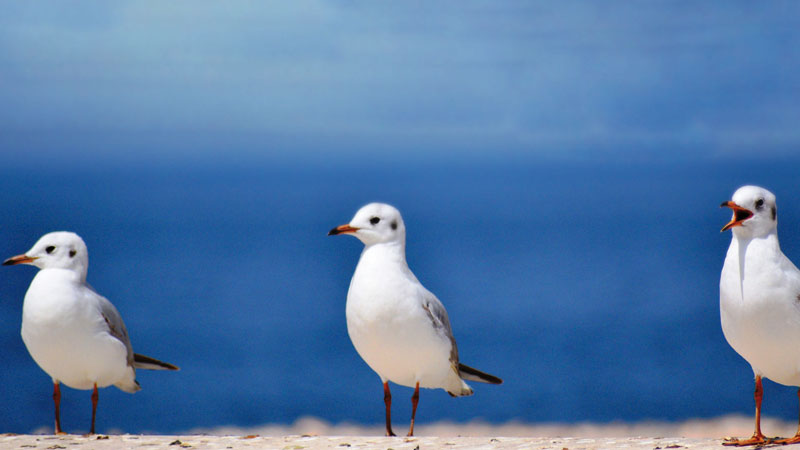


Oman’s winter clime has made it a preferred international hub for the migratory avian escaping the icy winters of the northern region. The jet-powered assorted gulls mark their trails across the blue miles and relax for a while along the coast, which offers them rich marine food sources and suitable salt flats and khors
They come from a faraway land and embellish Oman’s coast every winter, returning back at the fall of autumn. Watching these white feathered marvels hovering over the blue sea and shooting gluttonous intentions over a fisherman’s boat is an immaculate iconography of any shoreline at this time of the year.
As Salim anchors his boat near Muttrah fish market with his fresh catch of the day, he was seen generously handing out few fishes including crabs and shrimps to the seagulls that flocked around after they had followed him to the shore. They gushed and squeaked as they received their meal of the day. “They have been following me from the time I start my journey to the sea every day. Not only today every day since the winter sets in, they are my fishing companions and I love to see them chasing me throughout. Trust me, there are countless behind my boat,” smiled Salim.
They are intelligent, squeaky, aggressive, greedy and are addressed with many such assorted adjectives, that definitely do not match the striking and magnificently pompous chase they give to any fisherman’s boat. Seagulls with its history and science of long route migrations are known to fly from the land as far as Alaska, Siberia and other Mediterranean coasts and on reaching Oman they enrich the season and sea.
These inbound migratory birds are winter wonders to visitors and locals alike, making the country’s backdrop quainter. There are thousands of them classified under numerous species that call our beaches their home for a few winter months and sometimes even for a
longer span, making it their own slice of paradise.
Gulls belong to the seabird family Laridae, closely related to the terns and more distantly to the wader species. “It is a massive migration that befalls this time of the year. Oman may not be their final destination, but they beautify the terrain during their stopover. They stop here before heading further and while returning back to their nesting ground in the
North,” says Simon Wilson, Technical Director of Five Oceans Environmental Services LLC.
As this chain migration follow its definite pattern every year, there has been a rising score in the number of migratory gulls as per the records, as even the rarest of the species belonging to this Larus family passes Oman while migrating through this route to further south to escape the northern chill and halts here to relish ample availability of food and the warm water. “We spend more effort on counting them over the sea. There has been a substantial escalation in the number of migratory gulls to Oman in recent time and all belonging to diverse species under the same family. The reason behind their stopover in Oman is the warm habitat, and the marine creatures they feed on. During this month they are found in Barr al Hikman and Duqm in large numbers,” says Ward Hagemeijer, Programme Head Business and Ecosystem of Wetlands International.
Most of the species that come to Oman are from the distant lands of Mongolia, North Russia and Caspian are named under Barabenis, Heuglini and Cachinnans of the gull clan. The lovely Bonaparte’s gull/ Larus ridibundus commonly termed as the black headed gull, fly all the way from Alaska to warm south, feeding on crustacean, small fish and marine worms and are rare. Larus Fuscus or the lesser black-backed gull, Caspian gull, Steppe gull, Heuglin’s gull from Taymyr peninsula, Finland and Europe are not only experienced migratory bird but studies have shown that they possess a highly developed complex communication skills through extensive vocalization and body movements.
Like all fishermen, every beach visitor has grown an acquaintance with the gulls. Infamous kleptomaniacs, gulls stealing and nagging for food from human plates are not uncommon; though feeding them with bread and other snacks makes us feel bonded with these white beauties. “Feeding the gulls is common sight at any beach or Cornish in the city. Children and grown ups love to feed them with breads and fries. A scavenger species — gulls are in the niche ecologically and can digest anything they eat even from the nearby dustbins. Though feeding them human food is not natural way to treat them. They can get aggressive and attack for more food and sometimes can harm their long-term health,” warns Simon Wilson.
Oman Observer is now on the WhatsApp channel. Click here



